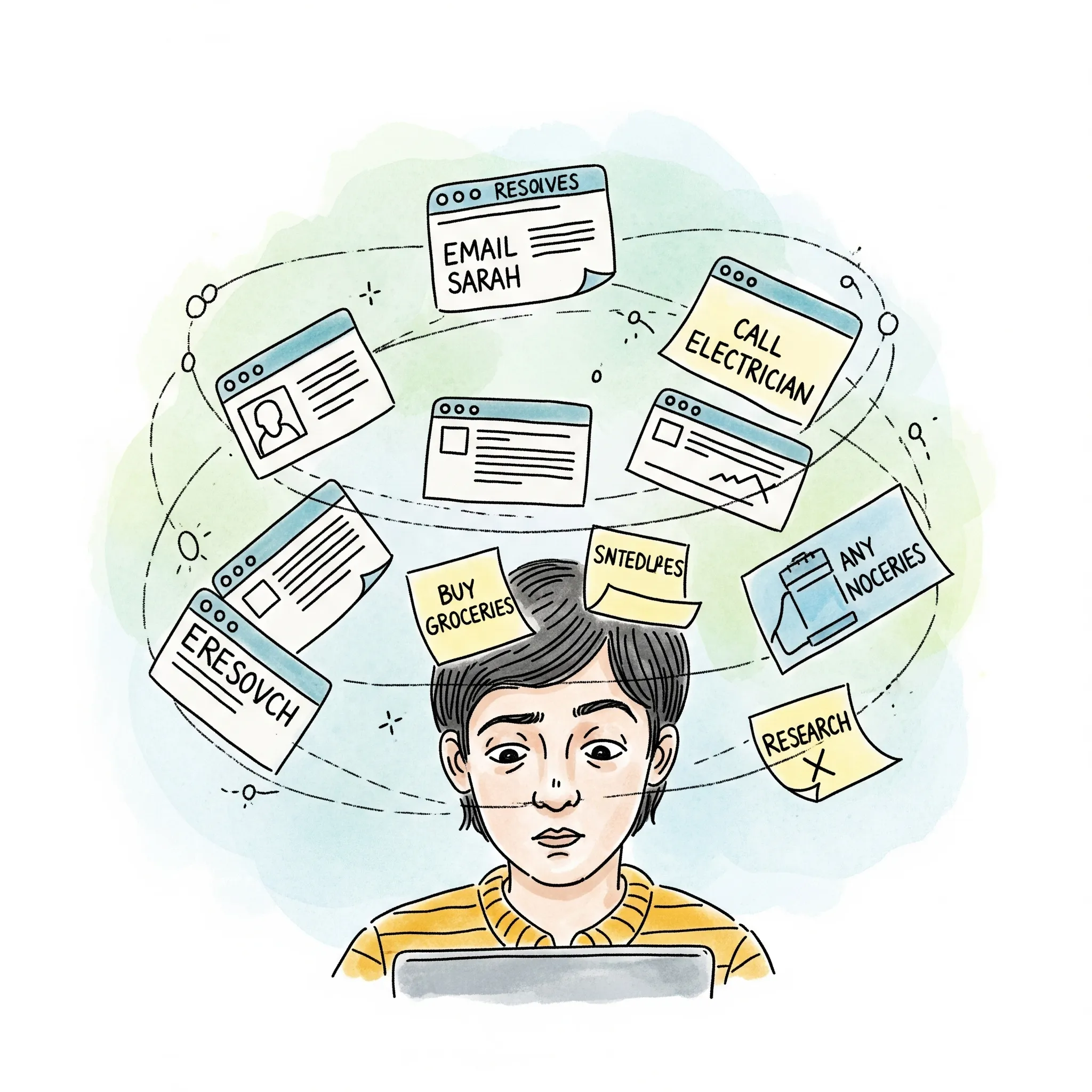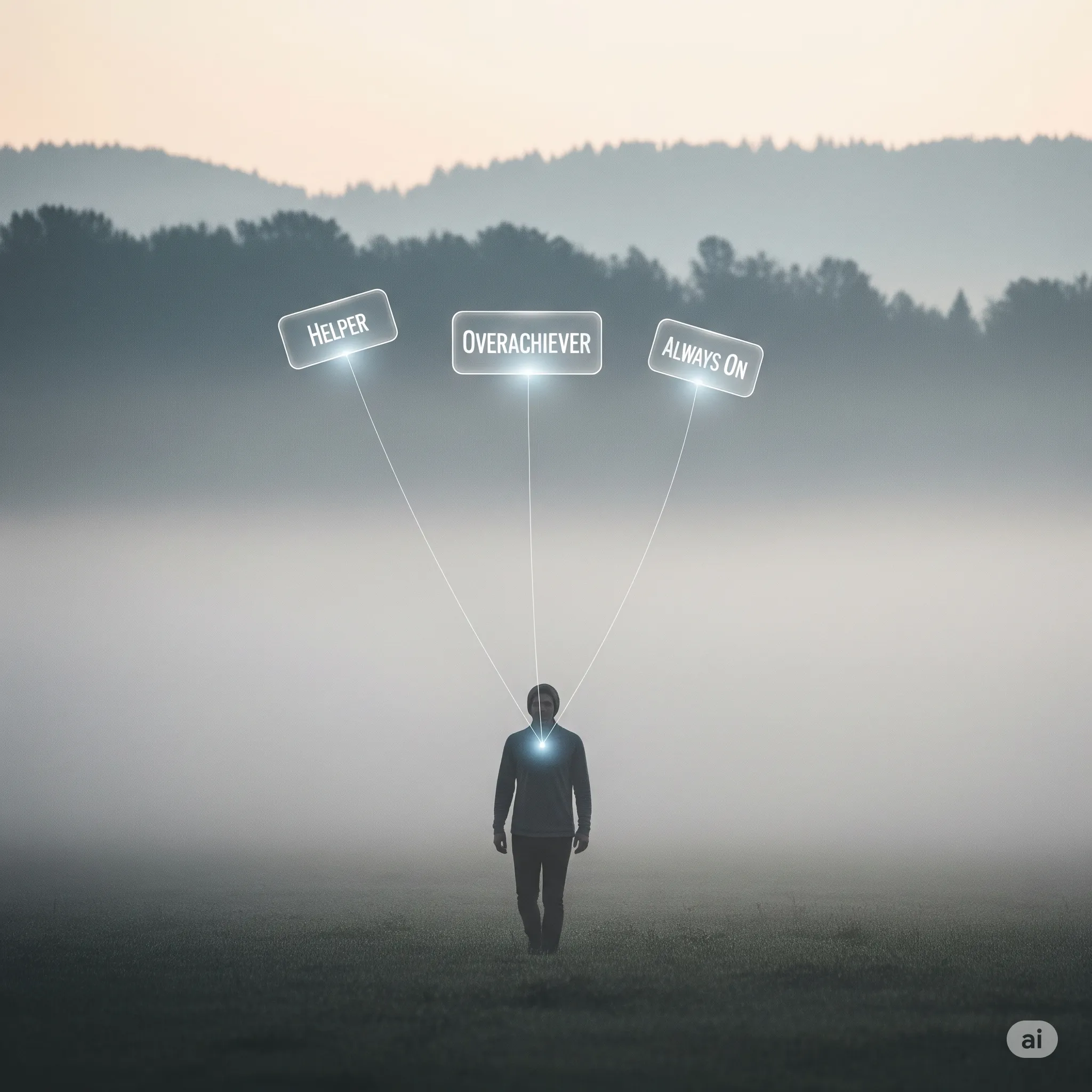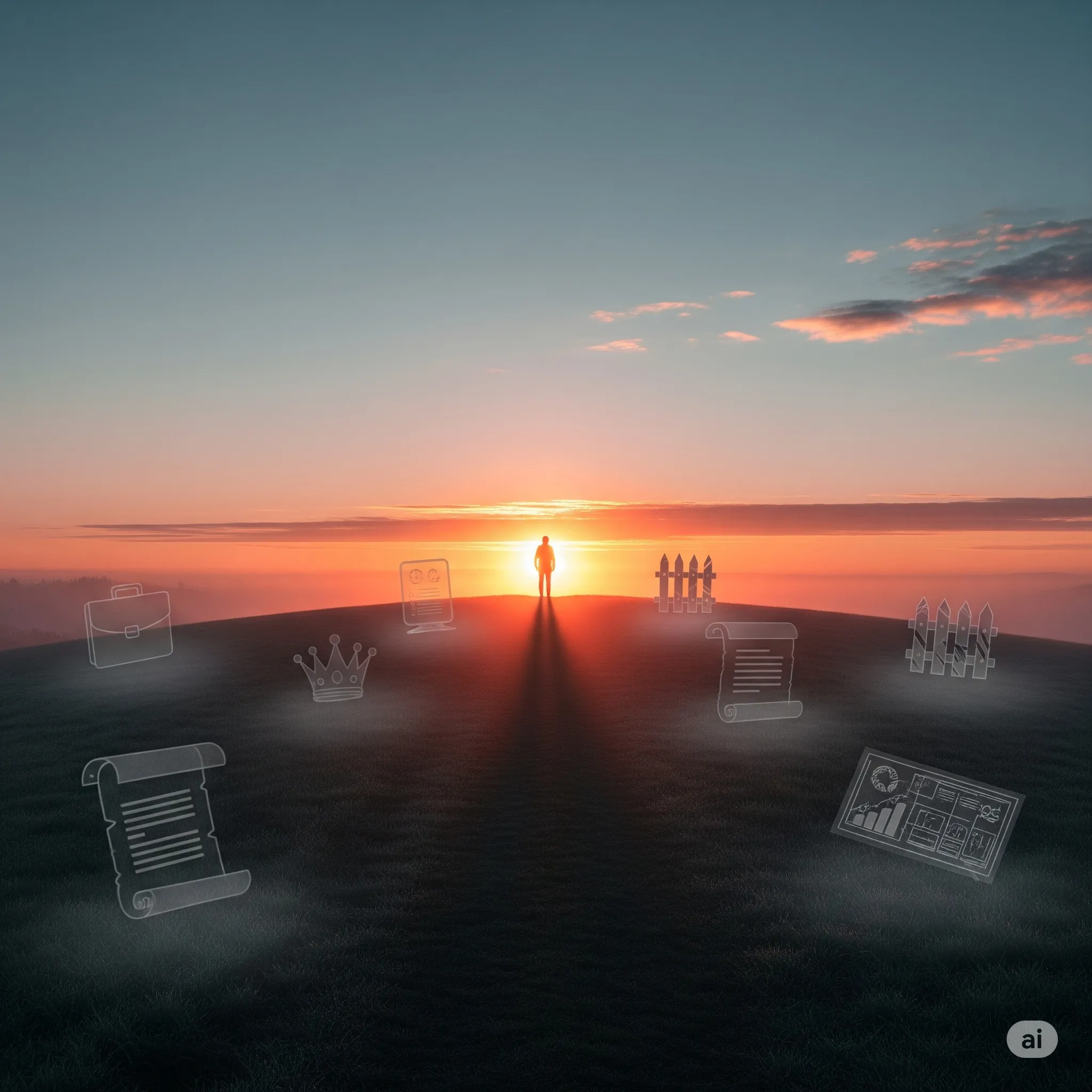Most of us know when we’re overspending. But not when we’re overcommitting.
In our daily lives, some of the most expensive drains don’t show up on a receipt. They show up in subtler ways. Like taking twice as long to write a simple email. Or opening a browser tab and forgetting why.
These hidden costs quietly chip away at our time, energy, and freedom.
In this article, we’ll explore three invisible expenses that often go unnoticed: mental bandwidth, time leakage, and default subscriptions. We’ll also uncover a fourth category that’s just as important but rarely named: emotional subscriptions.

You don’t need a new app or a time management system to address them. Just a bit of awareness and a willingness to notice what no longer fits.
Let’s take a closer look.
1. Mental Bandwidth: The Hidden Tax on Every Decision
If you’ve ever felt mentally tired after making too many small decisions, you’re not imagining it. This is known as decision fatigue, and it’s well-documented in psychology [1].
But mental bandwidth isn’t just drained by choices. It is also consumed by open mental loops. These are the lingering tasks, thoughts, or unresolved conversations that your brain keeps tabs on. That email you haven’t answered. The errand you keep postponing. The meeting you meant to reschedule.
Psychologists call this the Zeigarnik Effect, which shows that unfinished tasks take up more mental space than completed ones [2]. These loops quietly pull focus in the background, making it harder to think clearly.

There’s another factor worth noting. Ambiguity can be more draining than complexity. A vague task like “work on presentation” will often feel heavier than “draft first 3 slides.” When the next step is unclear, your brain struggles to close the loop.
Takeaway: Reducing your decision load helps, but so does defining and completing open tasks. You might try checklists, short rituals, or simply rewriting vague to-dos into specific actions. A five-minute task written clearly can feel lighter than a two-minute one that’s ambiguous.
2. Time Leakage: The Cost of Fragmented Focus
You don’t need to lose hours to lose momentum. Tiny, untracked moments often do the most damage. A few scrolls here. A quick tab switch there.
Many people assume distraction is the problem. But the real issue is often fragmentation. Research shows it takes the average person over 23 minutes to fully refocus after an interruption [3].
And the interruptions aren’t always external. Often they’re internal. You check your inbox while writing a report. You respond to a message mid-task. These micro-shifts create what researchers call attention residue. Even after you move on, a part of your mind stays attached to what came before [4].

Work tools can make this worse. Responding to notifications or toggling apps feels productive, but it often results in shallower thinking and decreased creative output.
Try this: Use a lightweight time tracking tool like Toggl Track or a browser extension like RescueTime. Don’t aim to control your time. Instead, observe it. Even one week of awareness can help you notice patterns you didn’t realize were costing you energy.
3. Default Subscriptions: Commitments You Forgot to Cancel
We all have digital subscriptions we no longer use. But there are other types of commitments we forget to cancel. These include routines, meetings, or roles we once agreed to but never revisited.
Examples might include:
-
Weekly team calls that no longer have a clear purpose
-
Projects you’re no longer excited about
-
Social roles or obligations that feel more draining than meaningful
These are the behavioral equivalents of auto-renewals. They continue by default unless you actively opt out. Many of them were useful at one point, but the context has changed. The problem is that we often continue out of habit or guilt, not intention.
One reason this happens is loss aversion. Psychologists have found that we are more likely to stick with something to avoid loss than to pursue a better alternative [5].
Reflection prompt: What have you kept doing simply because you always have? Which of those commitments would you feel relieved to pause or cancel? Try a simple calendar audit. Look back over the past two weeks. What tasks or meetings felt like obligations rather than choices?
4. Emotional Subscriptions: When Identity Becomes a Drain
This one is harder to see. But it can be just as costly.
Many people stay subscribed to identity roles they never consciously chose. The dependable one. The overachiever. The helper. The always-available friend or partner.

These roles are not bad in themselves. In fact, they are often rewarded. But when they are no longer aligned with your actual values or needs, they start to feel constrictive.
Psychologists refer to these patterns as identity commitments. They are roles we internalize as part of who we are, often without reevaluating them [6].
Here are some signs you might be stuck in one:
-
You feel guilty even imagining stepping back
-
You automatically say yes, even when your plate is full
-
You tell yourself “this is just who I am,” but it no longer feels true
Letting go of an identity role can feel risky. But doing so opens up enormous clarity. When you unsubscribe from an outdated version of yourself, you create space for one that fits who you are now.
Try this journaling prompt: Who would I be if I let go of this role for a week? What am I afraid might happen? What might actually happen instead?
5. Ambiguity Costs More Than Complexity
It’s worth pausing here to revisit a subtle point.
Many people assume hard tasks are what drain them. But often it’s the vague ones that feel most mentally sticky.
An email you’re not sure how to respond to. A task labeled “finalize project.” A lingering item on your to-do list you never defined clearly.
This ambiguity creates friction. You can’t finish what you haven’t defined.
Mini-action: Take ten minutes to rewrite your task list. For each item, ask: What does “done” look like? What’s the very next visible step? You might find that what felt overwhelming was really just undefined.

Reclaim Your Freedom: A Gentle Framework
Rather than try to fix everything, start small. Think of it as a quiet act of self-realignment.
Here are a few low-friction ways to begin:
-
Observe one invisible cost this week. Don’t try to fix it. Just notice what drains your time or energy without obvious benefit.
-
Pause one recurring task, role, or app. Even a short break can create perspective.
-
Simplify one decision. Use a default lunch, a weekly planning template, or scheduled blocks to remove daily friction.
Freedom isn’t always about doing more or having more options. Sometimes, it’s about doing less and choosing more deliberately.
The hidden costs in our lives rarely feel urgent. But they are persistent. And when we begin to notice them, we often reclaim not just our time, but also our sense of clarity, attention, and possibility.
References
-
Baumeister, R. F., et al. (1998). Ego depletion: Is the active self a limited resource? Journal of Personality and Social Psychology.
-
Zeigarnik, B. (1927). Über das Behalten von erledigten und unerledigten Handlungen. Psychologische Forschung.
-
Mark, G., Gudith, D., & Klocke, U. (2008). The cost of interrupted work: More speed and stress. CHI Proceedings.
-
Leroy, S. (2009). Why is it so hard to do my work? Organizational Behavior and Human Decision Processes.
-
Kahneman, D., & Tversky, A. (1979). Prospect Theory: An Analysis of Decision under Risk. Econometrica.
-
Stryker, S., & Burke, P. J. (2000). The past, present, and future of an identity theory. Social Psychology Quarterly.